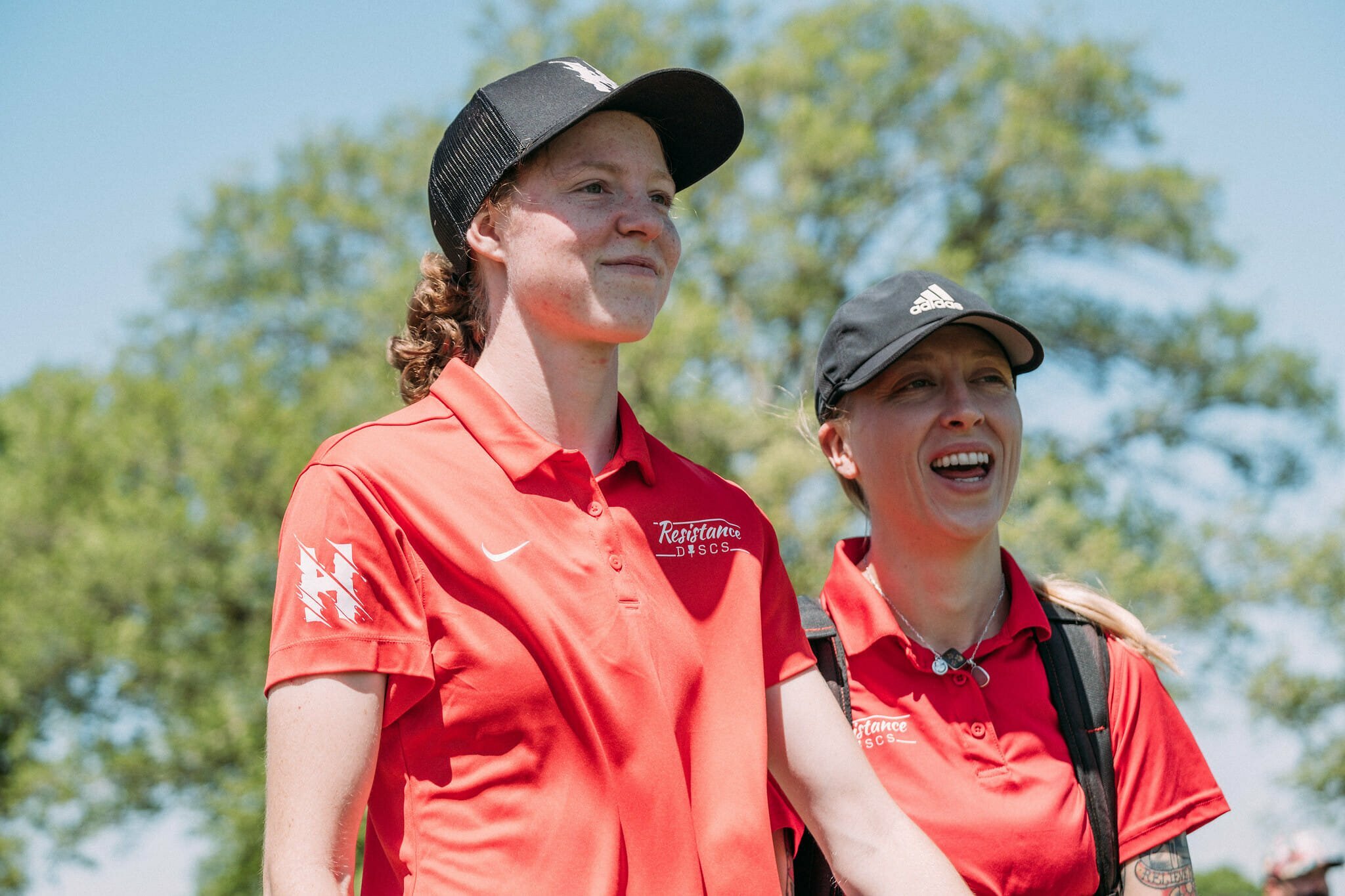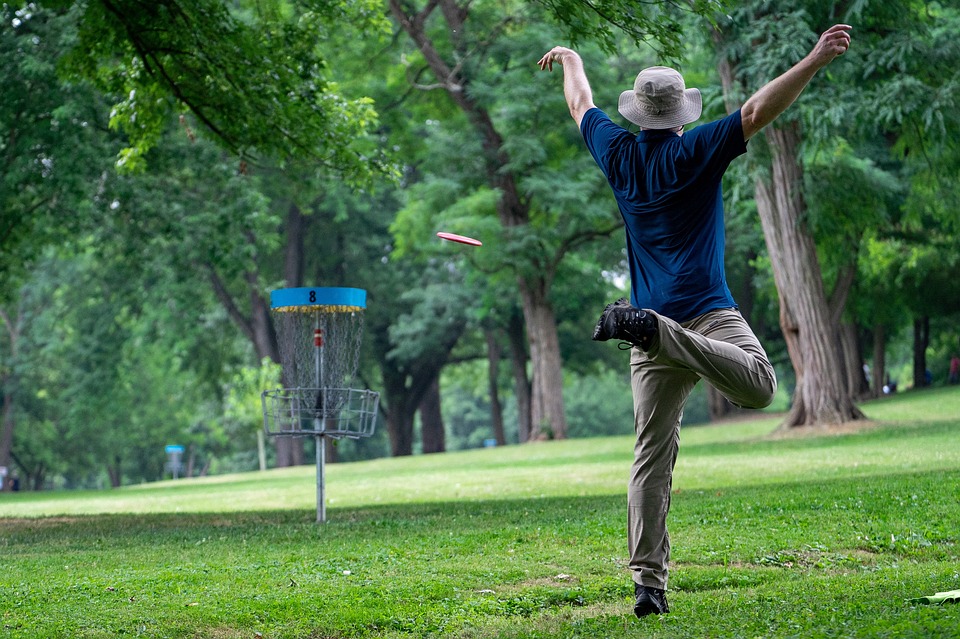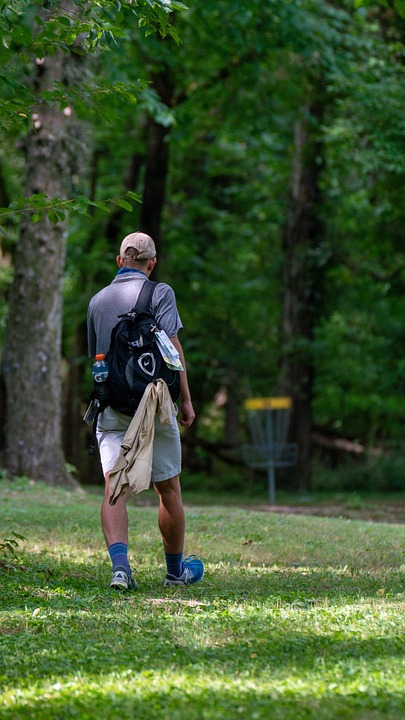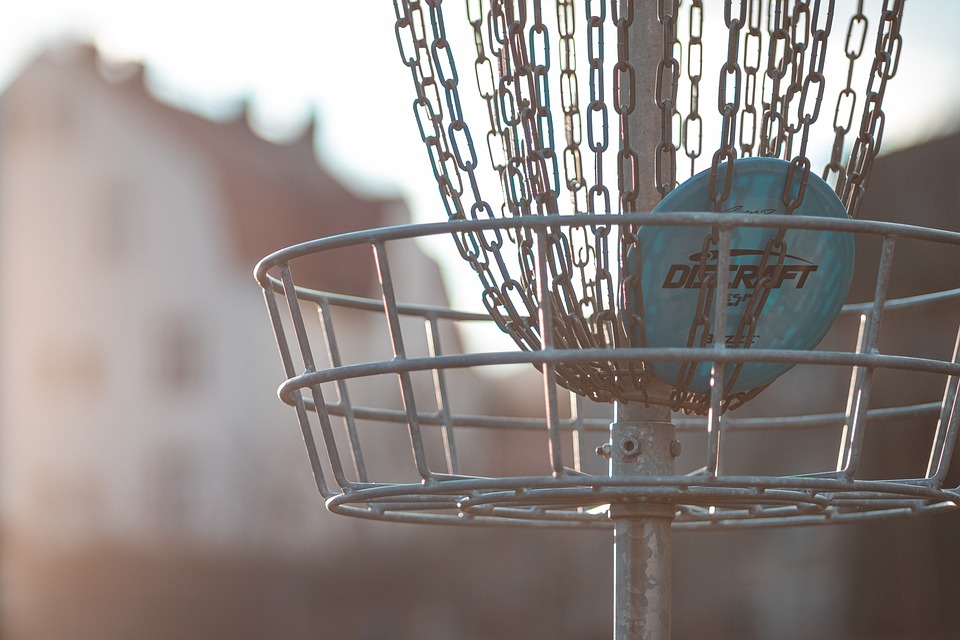Tuesday Tips: Think Like a Caddy to Improve Your Game
Prepare like you would if you were caddying for a pro.
March 8, 2022 by Steve Andrews in Instruction, Opinion with comments
I like caddying nearly as much as playing. Some of my favorite disc golf memories are about helping a good friend lock down the club championship or helping my doubles partner in a singles match during a team competition. Most importantly, spending some time as a caddy really highlighted what I needed in my own game to play my best.
For a long time in traditional golf, caddies were afterthoughts. They carried the bags of top players in professional events but were seldom seen as crucial to the outcome. For years, the standard, only somewhat joking, description of a caddy’s job was the “Three Ups” — Show Up, Keep Up, and Shut Up. Since small payouts were the hallmark of the opening decades of professional golf, players usually traveled without a caddy and simply found someone at the course where an event was being held.
However, as the PGA Tour evolved, caddies evolved from largely invisible bag porters to crucial factors in players’ successes. Perhaps the first superstar caddy was Angelo Argea, who carried Jack Nicklaus’ bag for 20 years and was there for 40 of the Golden Bear’s victories. Jeff “Squeaky” Medlen caddied for Nick Price for all three of his major victories. When Price couldn’t make it to the 1991 PGA Championship, Medlen picked up the bag of the last player off the waitlist who got in so late he had never seen the course: an unknown named John Daly, who Medlen then caddied to his first major title. It was an unbelievable victory that was sometimes credited to Medlen’s guidance as well as Daly’s overwhelming power.
Since then, PGA caddies have become superstars. Many caddies have forged long-term partnerships with players and become legitimate celebrities. For example, Jim “Bones” Mackay has been at Phil Mickelson’s side since he turned professional in the early 1990s. Carrying the bag for Tiger Woods is one of the highest-profile jobs in the game, and has passed from Mike “Fluff” Cowan to Steve Williams to Joe LaCava, who had caddied for Fred Couples for two decades before caddying for Dustin Johnson. The shifting partnerships of players and caddies drives media speculation about how a new caddy may shape a player’s career. Changing caddies is sometimes more dramatic than changing equipment manufacturers.
Disc golf has not yet seen the rise of the superstar caddy. Most players carry their own bag or rely on a friend or spouse (or mom, in the case of Gannon Buhr!). Some disc golfers simply hand their bags off to a spectator who is standing near the driving range. This is how Justin Brosmer, one of my favorite playing partners in my home club, wound up on the bag of A.J. Risley at the 2019 GBO. In that case, Justin’s job was merely to keep up and give good vibes (and he somehow got almost as much face time on the live broadcast as Risley).
But a caddy can be more than someone that totes equipment around the course. Thinking like a professional caddy can let you help your friends and teammates and can also teach you to play better when you are on your own.
Pregame Partner
There are lots of ways a caddy can help before the round begins. These can be as simple as playing catch as part of the warmup or going to get all the discs the player threw in the field so they can putt rather than spending time collecting their discs. If you know the player well and have an eye for their swing, you can see how they are doing in warmups and talk about technique. You can also discuss strategy before the round – the challenges they might face or the tough choices they may have to make mid-round.
If time permits, a caddy can be essential in scouting the battlefield. Squeaky Medlen, even though he knew there was a good chance Nick Price would have to pull out of the 1991 PGA, still walked every inch of the course to build his yardage book. PGA Tour yardage books are full of calculations from every possible angle because it is important to have information you can’t get from a rangefinder during a round – how far is the green past the turn, how much room is there behind the pin, how wide is the fairway, how far is it across the pond, how much room do I have to lay up before the OB? Disc golfers may not need all the details found in a PGA yardage book, but a great caddy will have the most important numbers ready to go. And, if you are scouting a course for yourself, you should too.
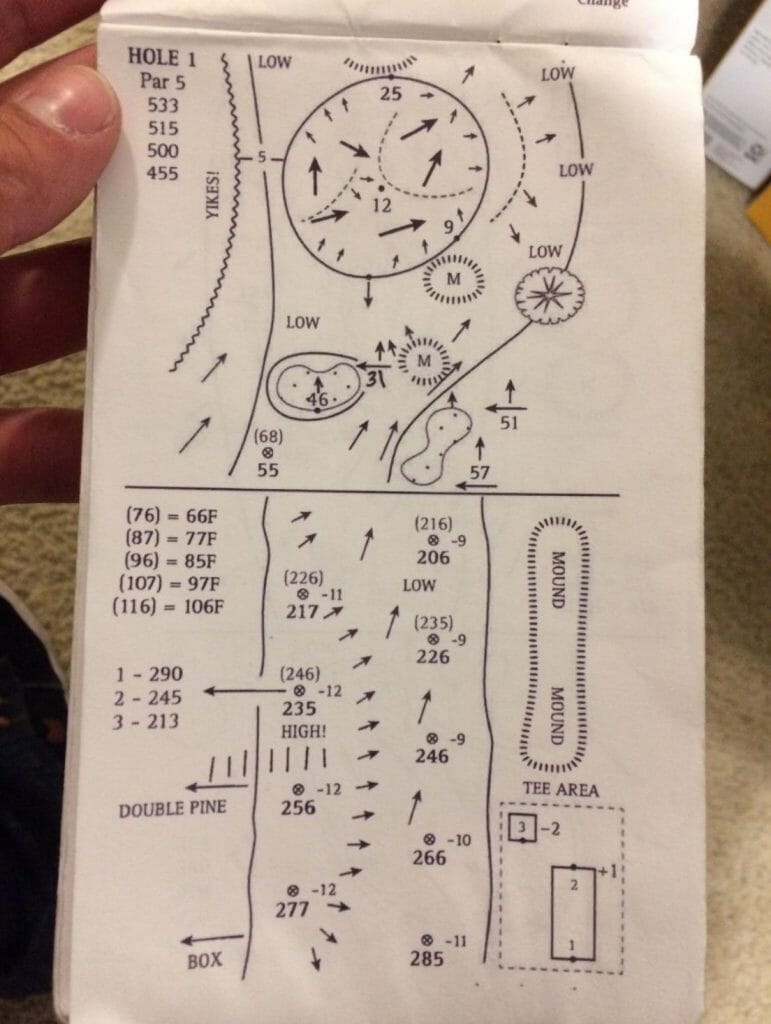
Everything in Its Place
Job #1 of a caddy is to make sure that everything their player needs is in the bag and ready to go. That means discs are clean and dry, and there are minis, snacks, water, towels, and whatever else the day may call for. If the player wants to know distances, the rangefinder must be ready to go for every shot. A good caddy will know the weather report and make sure to have an umbrella if there is any chance of rain. Yes, the player is ultimately responsible for all of this, but the caddy’s job is to handle the logistics so the player can concentrate on scoring.
This is the same thinking you need to apply to your own game. Think ahead and make sure that all your equipment is there and ready to go. Make sure that you know exactly where everything is so you can get it quickly – snacks in the left pocket, towels in the right, minis up top, range finder on the lanyard in the right drink holder. Any system can work, but you don’t want to be digging through your bag searching when it is your time to go.
Know What Information You Need
One of the worst mistakes in golf can be thinking you know what shot you are going throw before you get to your lie. Sometimes this is walking up thinking you have a tap-in only to feel crushed when you are 50 feet out with a weird stance. More commonly, it is deciding your shot is a turnover before you examine the situation, only realizing that the wind has changed as your disc is sailing towards the OB just right of the basket.
When I am caddying, I encourage my player to start every shot from a blank slate. I want to provide a shorthand of the crucial facts: distance, slope, wind, hazards, and – if the player wants it – the situation. My job is to get all this information as fast as I can and relay it as concisely as possible. Last year, I was caddying for my friend Josh in the final nine of our club championship. In the fairway on one of the long closing holes, I said to him: “345 feet out, uphill, left to right wind, can’t go right because of OB but as much room as you want on the left, you are up two, and they probably can’t birdie from their position.” In one quick sentence I tried to condense the context of the shot. At that point we took a moment to talk about disc and shot selection, but he knew everything he needed to make his choice. He decided to cheat out to the left side with his big forehand, making sure to aim wide enough to stay left of the basket even with the wind pushing him right. He threw it great, made the putt, and padded a comfortable lead.
RELATED: Hear from Hailey King’s caddy Lindsay Rohrdanz on The Upshot podcast
You can tailor this information to whatever the player prefers. For example, some players don’t want to know the score or don’t want to know your thoughts about what the competitors might do. That’s fine. Get them whatever information they need to make their decision.
This is also a great habit to get into for your own game. Get into the habit of having the essential information before you throw – distance, wind, slope, and as much situational data as you need. Go over these details as you are visualizing your shot. So often, players don’t check and then kick themselves for not considering the crucial piece of information that would have made the difference. You cannot slow down the pace of play, but you may discover you can play faster and more confidently when you know the information you need and have a system to get it quickly.
Ask the Right Question
As a caddy, I seldom suggest a disc or a shot unless asked. But I will ask simple questions like “what are you trying to do?” This question, which seems so obvious, is one so many players seldom ask themselves. They are either throwing with no real vision of what they want or don’t realize what they want is impossible, unnecessary, or incredibly risky. Many players throw and then say, “I have no idea why I threw that disc” or “I have no clue what I was hoping for.” Asking a player these kinds of simple questions can be the best service of a caddy. It forces the player to really visualize (and verbalize) what they want to do. This often produces better shots.
All players get tunnel vision. We see a tight shot between two trees straight at the basket and don’t pause to look for other options. Sometimes just saying, “is that the only shot?” can snap us out of throwing a shot we think we have to throw and help us see safer routes. These are also important things to ask yourself. Don’t just throw the first shot you see, take a second to look at various lines and stances that might offer other ways to put it close.
Captain of the Cheer Team
One of the most important jobs of a caddy is helping to keep a player’s mental game on track. This involves being positive about the shot selection, listening to complaints, and preventing negative self-talk. Navigating a player’s negative thoughts and knowing how to help them focus on the task at hand rather than dwelling on past mistakes or bad breaks can be a challenge. The best thing to say is “I love it” when a player decides on a shot. The choice is made, and confidence is often more important than disc selection. If it doesn’t work out, it is important to remind them they went through their routine and that is all they can do. The process is under their control, not the outcome.
This is where experience as a caddy has helped my own game the most. One of my biggest flaws is being hard on myself during a round and spiraling into a dark mental place. I say awful things to myself as a player I would never say as a caddy. I always take great care of my players as a caddy but often took horrible care of myself when I was playing. Now I try to talk to myself like a caddy, saying that I made a good move on it, I can get up and down from there, and that there’s a lot of golf left to play. Sometimes, I need to tell myself a tough truth, but at least I can phrase it in a way that is forward looking rather than just self-critical.
The key to being a great caddy is always looking for ways to help a player shoot the best round they can, knowing when to step in and when to step back. You need to look for ways to reduce stress on them, help solve problems before they happen, and be prepared for everything that might happen on the course. Thinking this way also teaches a lot of great lessons for when you are carrying your own bag.
